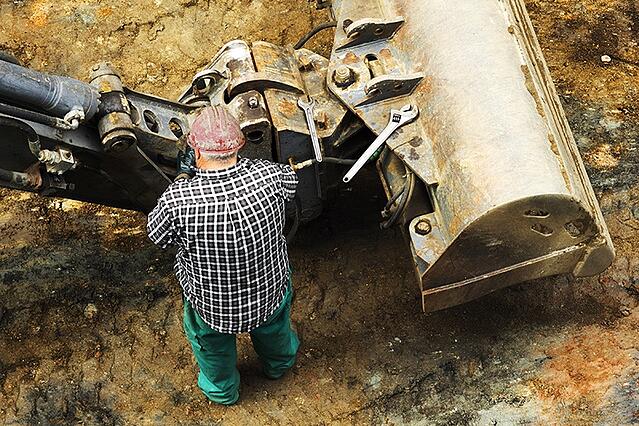Your fleet forms the basis of your construction company’s operations and productivity. The entire company rely on this equipment and tools in order to finish projects efficiently. What a lot of contractors don’t realise is that their machines are slowly deteriorating without them noticing.
So while your equipment is on site, you might not be totally aware of their state and status. Educating yourself with the different factors that could damage your fleet over time will tremendously help you monitor your equipment on-site. To help you out, we have listed the top 5 equipment killers below.
Suspect 1 – Only doing maintenance when major repairs are needed

Breakdowns are usually caused by small damages that added up over time, and repairing major damages are costly and time consuming.
Solution: There are a lot of ways to avoid equipment breakdowns on site, and performing routine maintenance before and after your machines are used is one of them. It is considered best practice for any supplier to perform routine maintenance work frequently, most especially if your equipment is used often. Well maintained equipment often perform better, and can contribute to higher productivity.
Suspect 2 - Theft
A lot of equipment is left on-site after a day’s work, often unsupervised and unguarded. So while you think your excavator may be hard to miss being taken off site, it happens.
Missing or lost equipment means that suppliers acquire the burden of replacing the equipment and losses in productivity.
Solution: A lot equipment hire companies invest in GPS tracking systems for their fleet. Adding GPS tracking to your equipment has a lot of advantages, including being able to track where your fleet is at all times. If your equipment is not where it's meant to be, GPS makes it easier to track down by checking the last known location of the equipment.
Suspect 3 – Forgetting to check up on all parts of your equipment
Construction equipment has a lot of functioning parts. Some even have a primary power source and a secondary power source. Take a cemenet mixer for example. A cement mixer is comprised of the truck and the mixing barrel which has its own power source. There are times that some functions of your equipment are overlooked when doing a routine check-up.
During routine maintenance work, there are times that the truck part of the cement mixer is checked thoroughly for damages, but the mixing barrel is just given a quick look-over. Equipment managers might think that the entire machine is in good shape, but since they just gave a quick look at the mixing barrel, any damage on the barrel or its motor that needs to be repaired are overlooked. This will lead to your machine’s deterioration and force major repairs that will cost you a lot of money.
Solution: Create a routine maintenance check list which lists all the parts of your equipment that needs to be checked. Having all functionalities and parts of your equipment on a checklist will ensure that nothing gets overlooked, and all damaged parts will be repaired.
Suspect 4 – Mother Nature
Exposure to rain, snow and extreme heat contributes to your equipment’s deterioration. Constantly exposing your equipment to rain or snow results in rusting and when rust builds up on a machine, there is a big possibility that your equipment will slow down and eventually breakdown. On the other hand, exposing your equipment to extreme heat will cause your equipment’s engine to overheat and breakdown.
Solution: You job site location may make it impossible to avoid exposure to rain, snow or extreme heat. However, certain measures will help you slow down its deterioration. During the rainy or winter seasons, make sure that you store your equipment away from the elements, and that they are as dry as possible to lessen the chances of rust build-up. During the hot summer months, make sure that you monitor the heat levels of your equipment’s engine. Giving your equipment short and frequent breaks will also help.
Suspect 5 – Delayed updates from site managers
Equipment hire company owners or equipment managers often rely on updates from on-site managers regarding their fleet but often times, updates are delayed. When it's experiencing problems or breaksdown, on-site managers are tasked to notify the right people regarding the repairs needed but communication between on-site representatives and your company are sometimes delayed. When there is a delay in updates, there is also a delay in repairs or maintenance which, in turn, slows down productivity on-site.
Solution: Mobile technology has greatly helped equipment monitoring. There are now a lot of remote monitoring systems that allow on-site managers to send updates regarding the status of the fleet. These systems can be easily accessed using a mobile device such as a smartphone or tablet.
As a supplier, your fleet is one of your biggest assets. Taking good care of your equipment is one way of nurturing your business. With a fleet that's in tip-top shape, more clients are bound to hire from you as the risk for breakdowns or other delays are minimised. Along with a well-maintained fleet, there are a few other ways to win more hire work for your supply company. Download our free eBook below which highlights 4 tips to help you increase your chances of winning hire work.